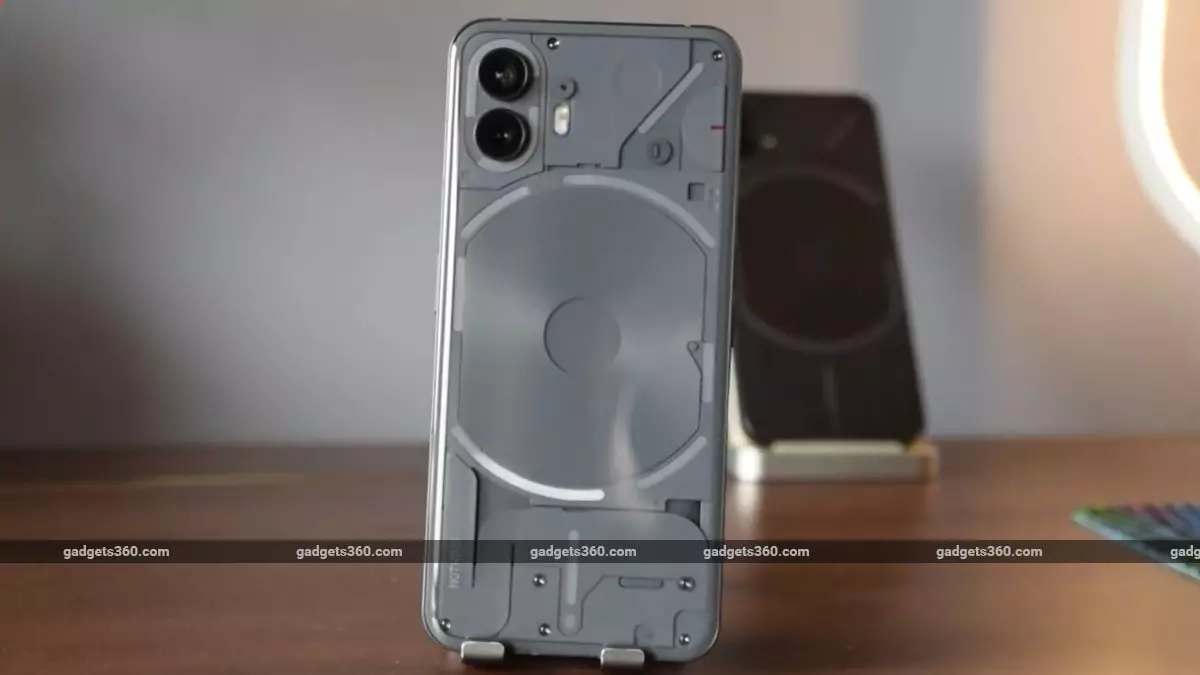Nothing, the UK-based smartphone company, is gearing up to launch the Nothing Phone 3 globally and in India on July 1. Branded as its first true flagship, the device aims to shake up a competitive market dominated by legacy giants. However, what seems like a tantalizing innovation on paper is overshadowed by a drastic price hike. The anticipated cost of roughly £800 (around ₹90,000) nearly doubles the launch price of the Nothing Phone 2 in India, which debuted at just under ₹45,000. This steep increase raises critical questions around the brand’s strategy, consumer reach, and the balance between innovation and value-for-money.
From a consumer’s standpoint, Nothing’s decision to encroach on the premium flagship territory is risky. The growing mid-range smartphone segment thrives precisely because it offers compelling specs with affordable pricing. By doubling the price, Nothing loses its inherent competitive edge—the blend of design novelty and reasonable cost. It seems the company may be ambitiously chasing the prestige of high-end recognition yet sacrificing the foundational principle that initially attracted its devoted fan base.
Innovation Wrapped in Familiarity
Nothing claims the Phone 3 will usher in visual and technical enhancements, notably replacing its signature Glyph Interface with a Glyph Matrix. The idea sounds fresh, promising a new aesthetic experience with improved interactive lighting effects. On the hardware front, the phone reportedly flaunts a 6.7-inch LTPO OLED display with a sharp 1.5K resolution and a 120Hz refresh rate – specs that easily fit into the premium echelon.
The triple-camera system is more intriguing, featuring a 50-megapixel periscope telephoto with 3x optical zoom, accompanied by similarly high-resolution main and ultra-wide sensors. Additionally, under the hood, the introduction of the Snapdragon 8s Gen 4 chip promises significant performance improvements over its predecessor, including a claimed 36% CPU boost and an 88% increase in graphical prowess. The inclusion of a large 5,150mAh battery with 100W fast charging and wireless charging capabilities further aligns with flagship standards.
Yet, while these specifications are robust and attractive, they are not groundbreaking when compared to contemporaries in the sub-₹100,000 segment. Industry-leading devices from competitors regularly deliver similar—or better—specs at comparable or slightly higher prices with more established software experiences and brand reliability. Nothing’s challenge, therefore, is not just hardware-centric but about convincing customers to pay a premium for its quirky design philosophy and evolving ecosystem.
Software Longevity as a Silver Lining
Intriguingly, Nothing’s commitment to five years of OS updates and seven years of security patches is a commendable and rare commitment in today’s Android ecosystem. This forward-thinking policy potentially compensates for the elevated price by promising long-term value that can offset initial cost concerns. Modern smartphones should rightly be viewed not just as disposable gadgets but as investments in a digital lifestyle, and Nothing’s update policy aligns well with that philosophy.
However, longevity alone won’t secure market dominance if the overall user experience, including software stability and app ecosystem integration, falls short. Nothing’s software is still maturing, and capitalizing on update commitment without delivering flawless user experience risks being perceived as lip service rather than genuine progress.
Risking Niche Appeal for Mass Market Share
Nothing’s roots lie in appealing to tech enthusiasts and design-savvy users who appreciate its minimalistic aesthetics and devil-may-care attitude toward mainstream smartphone norms. By entering the flagship pricing arena, it risks diluting its unique brand identity and alienating its core audience, who previously enjoyed niche appeal without the premium flagship cost burden.
In a market inundated with heavy hitters like Apple, Samsung, and OnePlus aggressively competing for the upper-tier smartphone buyer, Nothing’s daring move places it in a pressure cooker. Without standout, undeniable USP beyond design tweaks and respectable specifications, commanding a near-twofold price increase may not translate into the anticipated market success. It begs the question—does Nothing Phone 3 really justify this leap, or is it an overambitious gamble that could backfire, pushing it into obscurity among premium options?
—
In essence, the Nothing Phone 3 embodies an intriguing crossroads for the brand, teetering between innovation and overextension. Whether it can sustain consumer interest and avoid being dismissed as an overpriced middle child will largely depend on post-launch reception, actual performance stability, and whether the ephemeral “cool factor” can justify asking consumers to open their wallets wider than ever before.

